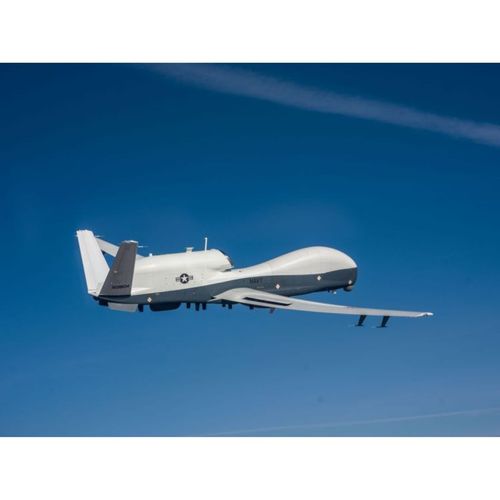Unmatched Maritime Surveillance: What You Need to Know About the MQ-4C Triton

Built for maritime surveillance, Triton carries all payloads for every flight without sacrificing endurance or altitude. // PHOTO: Northrop Grumman
September 18, 2024
BY Northrop Grumman
Advertisement
Advertisement
Related Stories
Global manufacturer of propulsion and intelligent controls for multi-domain uncrewed systems, ePropelled, Inc. has significantly expanded its operations to become the first U.S.-based drone component solutions manufacturer with a supply chain that meets Department of Defense compliance standards.
Ascent AeroSystems announced that its Spirit™ coaxial UAV platform has been added to the Defense Innovation Unit’s (DIU) Blue UAS Framework as a cleared component. This recognition builds on Spirit’s existing designation on the Blue UAS Cleared List as a complete system, making it the only airframe recognized on both DIU evaluated and approved lists.
ModalAI announced significant milestones in advancing trusted drone autonomy for the federal government. Three of the company’s FPV drones, the Stinger Vision FPV, Seeker Vision FPV 5” and Seeker Vision FPV 7” (Max), have been officially added to the Blue UAS Cleared List, the Defense Innovation Unit’s (DIU) designation for complete, government-approved unmanned aircraft systems.
MORSE Corp announced that it has been awarded a $48,054,384 firm-fixed-price Other Transaction Agreement (OTA) by the US Army Product Manager, Force Sustainment Systems in Natick, MA, to develop novel long range autonomous aircraft that can operate in GPS-denied Anti-Access/Area Denialenvironments. This agreement’s five-year performance period will enable the Army to significantly enhance its Contested Logistics capabilities.
General Atomics Aeronautical Systems, Inc. (GA-ASI), a global leader in unmanned aircraft systems and cutting-edge aerospace technologies, announced the acquisition of key assets, including a portfolio of patents and other intellectual property, from Achates Power, Inc., a San Diego-based innovator in advanced engine technology.





